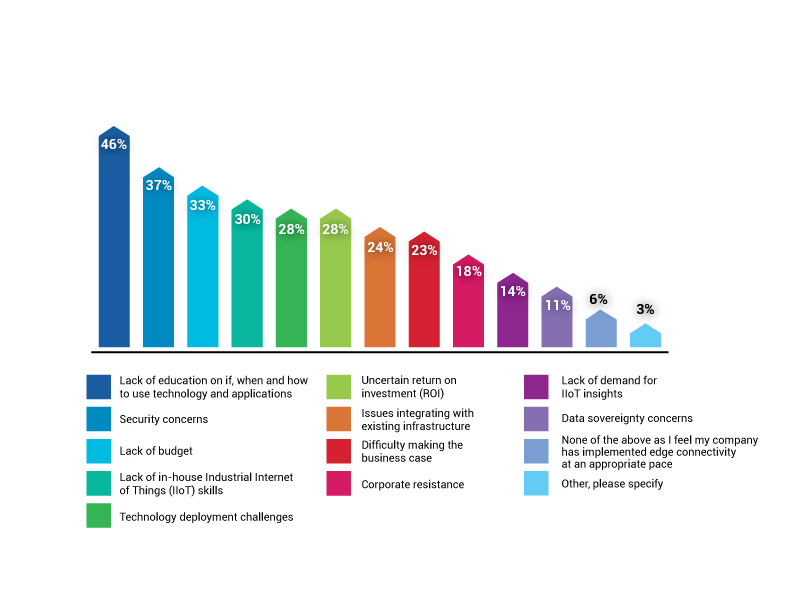Earlier this year, Stratus partnered with CFE Media to survey subscribers of Control Engineering and Plant Engineering who are involved in the selection and management of products or services meant to enable edge computing. We asked the engineers about their own skills and career goals, the performance of their teams and companies, and their attitudes towards edge computing and how it’s being implemented.
Is It All Hype?
Whenever a new technology arises, there are evangelists and there are naysayers. So we wanted to know how edge computing is perceived.
43% of respondents said edge represents a great leap forward in process and production environments. Just over half said that they were either early adopters of edge computing or are planning to act sooner rather than later.
We also asked what technologies their companies are incorporating along with edge computing to increase productivity across engineering, manufacturing, and operating systems. Almost half said smart sensors, which makes sense – sensors at the network edge can collect real-time data used for business improvement.
What’s Holding Edge Computing Back?
Although more than half of our survey-takers told us they are already implementing edge computing, about 40% said they were holding off, taking a wait-and-see approach. To find out why, we asked what barriers edge computing is facing in their organizations.
What are the Barriers to Edge Computing Deployments in Your Organization?

The biggest barrier to implementing edge computing is education. There is simply a lack of knowledge on how to use edge computing and the best applications or use cases. Second to lack of education was security concerns. Edge computing, while not less secure than other architectures, does present different security challenges and requires some additional steps to keep the network secure.
To learn more about the current state of edge computing download a free copy of the Stratus Edge Computing Trend Report.
[sc name=”Edge_Computing_CTA_2″]